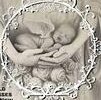The choice of clothing can be a meaningful step in a person’s funeral experience. By considering the departed’s preferences, cultural and religious customs, and the involvement of family members and friends in the decision-making process, a final outfit can be a heartfelt tribute that reflects the individual’s personality and life. Burial gowns are typically made from light-weight fabrics that are comfortable and gentle on the skin, helping to ease the stress of dressing a deceased person for their funeral or burial. They can be put on by either a funeral director or loved ones and are designed to be easily worn.
It’s common for people to wear their favorite outfit for a viewing or open casket funeral, but it’s also common for them to opt for a more formal attire at their final service. In fact, some families may even choose to bury a loved one in an outfit they never would have dreamed of wearing in life, such as a favorite pair of PJs or their beloved sports jacket.
If a loved one left behind specific instructions about their burial attire, honoring these can help comfort family members. A careful reading of a will or any written notes can reveal their preferences, and this information can be invaluable when choosing an outfit. For example, if they wanted to be buried in a particular shirt or dress, it’s a good idea to make sure that you can find one in their size and that it isn’t too tight or too baggy.
Some people opt to include personal items or accessories in their outfit, like a piece of jewellery, a watch, or a favourite book. This is a beautiful gesture that can add meaning and comfort to the grieving process, but be mindful of the policies of any chosen funeral home or burial site regarding such items. In some cases, including jewelry or other precious metal items in the burial gown can result in them being lost in the cremation or burial process.
White ensembles are often favored for the burial outfit, as they symbolize purity and peace. The color is easy to find in most wardrobes, and a well-fitting dress or tailored shirt paired with knee-length skirts or dress pants is a classic look. Subtle pastel colors can also be a calming option, particularly soft pinks or pale blues.
A variety of services have been developed to provide funeral apparel for infants who do not survive, such as Angel Gowns by Amanda, which transforms donated wedding dresses into elegant burial gowns for infants and children, and Bridget’s Cradles, which offers gowns and hand-sewn cradles for the tiniest of babies.
During the 19th century, it was customary to wear black for a time following a funeral, and this mourning period could last months, or even years, depending on the relationship of the mourner to the deceased. Nowadays, however, many people choose to disregard traditional funeral etiquette and don’t wear any shade of black for the viewing or burial.
